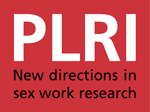sex work
by Matt Wade, New Delhi January 8, 2011 SUMAN is proud of her boob job. It cost about $2500, a small fortune for most Indians, but comes with a ”lifetime guarantee” and the promise of higher earnings. Like many Indian transsexuals, known as hijras, Suman boosts her income with sex work. Breast enhancement operations, now easily available in big city hospitals, are increasingly popular among the naturally flat-chested hijras. Suman’s investment is paying handsome dividends. On International Day to End Violence Against Sex Workers the PLRI are circulating a media release to launch their new website and stress the need

